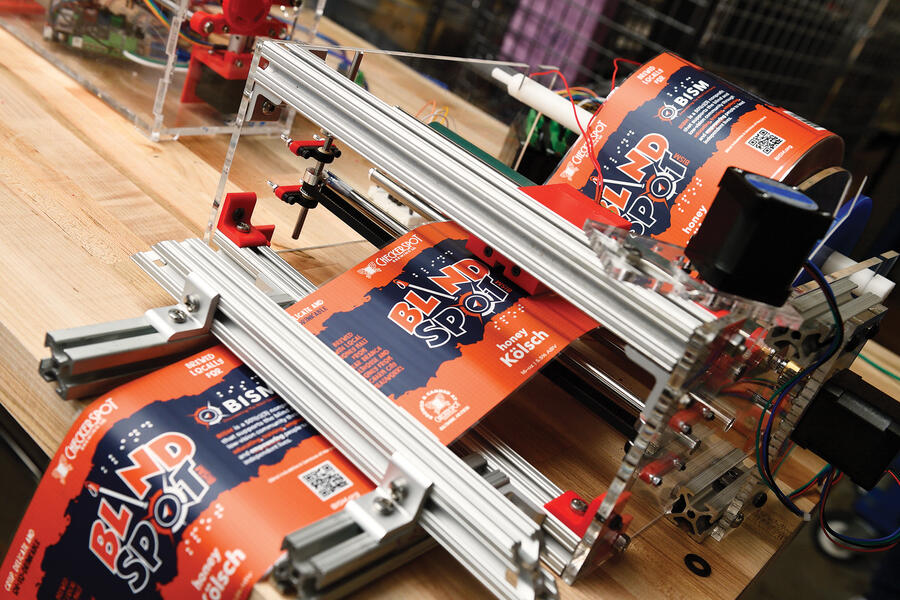Beer: It's one of the oldest human made beverages on Earth, dating back at least 13,000 years to Haifa, Israel, where hunter-gatherers brewed it in a cave. Today, people worldwide consume roughly 50 billion gallons of beer every year, making it even more popular than coffee.
Throughout its long history, global beer brewers and producers have largely overlooked blind and low-visioned individuals, who sometimes need help identifying a beverage and differentiating, for example, a Guinness with a 4.2% alcohol by volume from an imperial stout with an ABV of 12%. But students in Johns Hopkins University's Whiting School of Engineering recently found a way to change that, at least for one local beer.
At the start of the 2024 school year, the Baltimore-based nonprofit Blind Industries & Services of Maryland, or BISM, which serves as the state's largest employer of blind and low-visioned workers, reached out to the university's Department of Mechanical Engineering with a single request: develop a printer that adds braille writing to beer labels, a difficult challenge given a beer can's cylindrical shape. Four students in the program's senior design course took up the mantle, learning everything they could about braille printers and what it's like to live and work with limited or no sight.
That September, they started designing a machine capable of punching braille text not only into plastic beer labels but also card stock, glossy mailers, and other materials that commercial braille printers are currently unable to accommodate. A bonus: The students designed the printer so BISM's blind and low-visioned employees could operate it, making the hardware accessible rather than enclosing it (like most printers) behind hard casing.
"You can reach your hand in and feel everything going on inside our printer," says Catherine Pollard, Engr '25, who worked with classmates on the project. "Having open hardware that allows people to touch the various components was important."
Pollard says it's often easy in engineering "to move forward with the first idea that works on paper or go with a design that uses the most cost-effective materials and call it a day." But that wasn't an option in this case. "For this to be a functional product, the user experience is paramount," she says, "and we really took into consideration who would be operating the machine and how they were going to use it."
The students also developed easy-to-update software that allows their printer to communicate with the braille word processor and Photoshop design software that the nonprofit uses in its office, says Gabriella Hu, Engr '25, another project team member. "Seeing how much adaptive technology BISM has already incorporated into their lives helped us understand how our product could slot into their existing day-to-day work," Hu explains.
For BISM's annual fundraiser to support those with vision loss, the students printed 400 labels for a honey Kölsch beer called Blind Spot, made by Baltimore's Checkerspot Brewing Co. run by Judy Neff, BSPH '09 (PhD), and her husband, Rob Neff. The students have since delivered to BISM the labels and printer, which employees can use to add braille to a wide range of materials. Next year, BISM plans to partner with the local brewery once more for its annual fundraiser, and the presence of the printer will save employees from having to use a manual press to punch braille dots into as many as 1,000 labels—a tedious, error-prone process.
Checkerspot Brewing Co. is one of only a handful of breweries to add braille to beer labels. Manufacturers of other alcoholic beverages don't do much better, except for winemakers. In 1996, the French winemaker M. Chapoutier, which makes nearly 100 different wines, started adding braille to the millions of bottles it produces worldwide—a move that inspired other vintners to follow suit.
But a smattering of microbreweries appear to be catching on, including the Cincinnati-based West Side Brewing, which makes a German-style gose beer called (wait for it) Braille Ale.
Posted in Science+Technology, Student Life, Community
Tagged mechanical engineering








